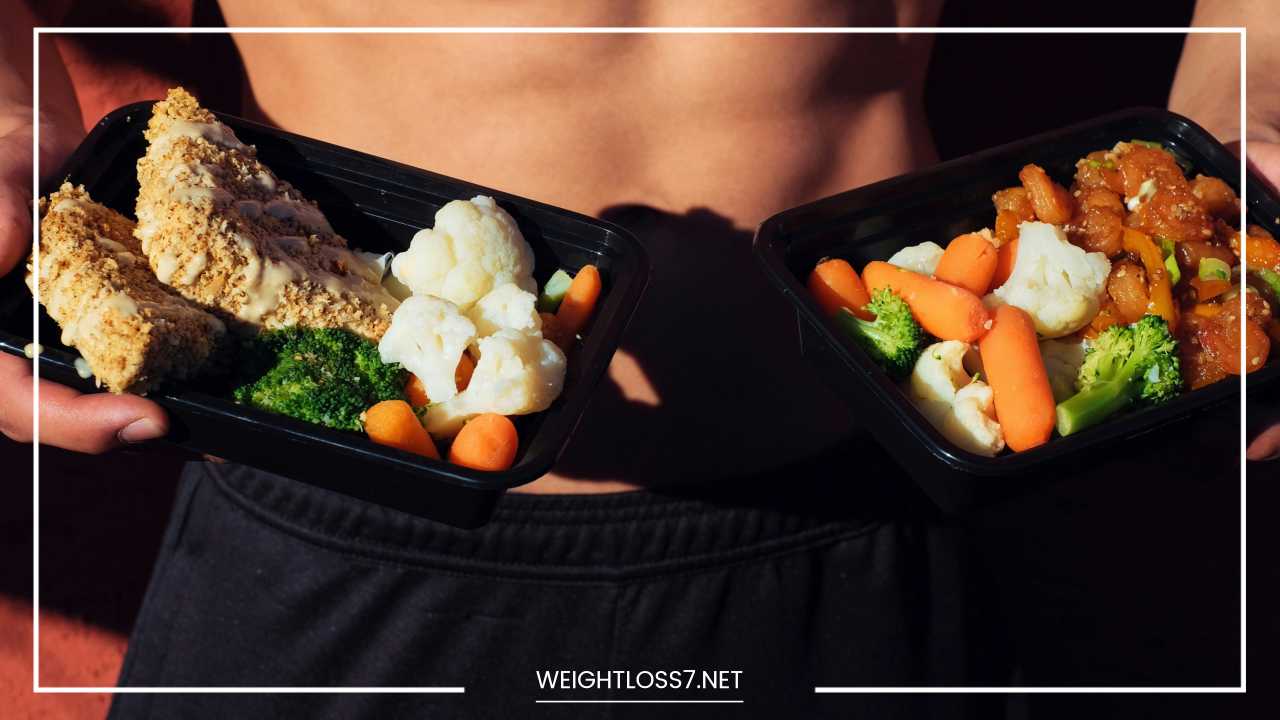Diet and Exercise Plan

Diet and Exercise Plan
Diet and Exercise Plan: Your Personalized Path to a Healthier You
Living a healthy life isn’t about fad diets or quick fixes. It’s a journey of self-discovery, building sustainable habits that fuel your body and mind, and finding activities you enjoy that keep you moving.
But with so much conflicting information out there, crafting a personalized diet and exercise plan can feel like navigating a labyrinth. Fear not, fellow health adventurer!
This comprehensive guide will equip you with the knowledge and tools to build a sustainable routine that’s uniquely yours.
Step 1: Fueling Your Body – The Dietary Cornerstone
Imagine your body as a high-performance engine. The food you choose is the fuel that keeps it running smoothly. Here are some key principles to guide your dietary choices:
-
Prioritize Whole Foods: Ditch the processed stuff and embrace whole, unrefined foods like fruits, vegetables, whole grains, lean protein, and healthy fats. These nutrient-dense powerhouses provide essential vitamins, minerals, and fiber that your body needs to thrive. Think vibrant berries packed with antioxidants, leafy greens rich in vitamins and minerals, whole grains for sustained energy, lean protein for building and repairing tissues, and healthy fats like avocado and nuts for satiety and hormone regulation.
-
Balance is Key: Aim for a balanced plate that incorporates all food groups in appropriate proportions. Think of your plate as a colorful canvas – fill half with fruits and vegetables, a quarter with complex carbohydrates like brown rice or quinoa, and the remaining quarter with lean protein like grilled chicken or salmon. Don’t forget healthy fats – a drizzle of olive oil on your salad or a handful of almonds for a snack adds flavor and satiety.
-
Mindful Portions: Moderation is key. Use smaller plates to avoid overeating and be mindful of portion sizes. A helpful trick is to visualize your hand as a guide – a palm-sized serving of protein, a fist-sized serving of carbohydrates, and a cupped hand-sized serving of fruits and vegetables. Pay attention to your body’s hunger and fullness cues. Eat slowly, savor your food, and stop eating when you’re comfortably satisfied, not stuffed.
-
Hydration is Essential: Water is the lifeblood of every bodily function, from regulating body temperature to flushing out toxins. Aim for eight glasses of water per day as a baseline, adjusting based on your activity level and climate. Infuse your water with fruits, herbs, or vegetables for added flavor and a boost of vitamins. Consider carrying a reusable water bottle and sipping throughout the day to stay hydrated.
Building Your Personalized Plate:
There’s no one-size-fits-all diet. Consider your preferences, dietary restrictions (if any), and health goals when crafting your meals. Here’s a deeper dive into some popular healthy eating patterns that can serve as inspiration:
-
The Mediterranean Diet: Emphasizes fruits, vegetables, whole grains, legumes (beans, lentils, chickpeas), fish, and healthy fats like olive oil. Research suggests this dietary pattern offers numerous health benefits, including reducing the risk of heart disease, promoting cognitive health, and potentially aiding in weight management. Think of flavorful dishes like Greek yogurt with berries and granola for breakfast, a salad with grilled salmon and quinoa for lunch, and a dinner of lentil soup with whole-wheat bread.
-
The DASH Diet: Designed to help lower blood pressure, it focuses on fruits, vegetables, whole grains, low-fat dairy, and lean protein while limiting saturated and trans fats, sodium, and added sugars. This diet is a great option for individuals with hypertension or at risk of developing it. Imagine a breakfast of oatmeal with fruit and nuts, a lunch of whole-wheat pita bread with hummus and vegetables, and a dinner of baked chicken breast with roasted sweet potatoes and steamed broccoli.
-
The Flexitarian Diet: This plant-based approach emphasizes fruits, vegetables, whole grains, legumes, nuts, and seeds with the occasional inclusion of lean animal protein. It offers a flexible and sustainable way to incorporate more plant-based meals into your diet. Enjoy a smoothie with spinach, banana, and almond milk for breakfast, a lentil shepherd’s pie for lunch, and a stir-fry with tofu and vegetables for dinner. Vegetarian and vegan options can easily be adapted within this framework.
Step 2: Moving Your Body – The Exercise Equation
Exercise isn’t just about burning calories; it’s a celebration of what your body can do! It’s about building strength, improving cardiovascular health, boosting your mood, and gaining energy.
Here’s how to find activities you love and create a sustainable exercise routine:
- Start Slow and Gradually Increase Intensity: Don’t jump into bootcamps or HIIT workouts if you’re new to exercise. Begin with low-impact activities like brisk walking, swimming, or cycling, and gradually increase duration and intensity as your fitness improves. Listen to your body. Don’t push yourself to the point of pain or exhaustion. It’s important to find a level of challenge that feels manageable yet encourages progress. Take rest days when needed, and allow your body time to recover.
-
Listen to Your Body: Don’t push yourself to the point of pain or exhaustion. It’s important to find a level of challenge that feels manageable yet encourages progress. Take rest days when needed, and allow your body time to recover.
-
Find Activities You Enjoy: The key to sticking with exercise is to choose activities you find fun. Experiment with different options! Take a dance class, explore hiking trails, join a sports team, try yoga or Pilates – anything that gets you moving and keeps you engaged. Consider activities you used to enjoy as a child or explore something completely new.
-
Incorporate Variety: Aim for a well-rounded exercise routine that includes different types of activities. This helps prevent plateaus, keeps things interesting, and targets different aspects of your fitness. Here’s a breakdown of the key exercise categories:
- Cardio: Strengthens your heart and lungs, improving cardiovascular health and endurance. Brisk walking, swimming, cycling, dancing, jumping rope, and elliptical training are all excellent cardio options. Aim for at least 150 minutes of moderate-intensity cardio or 75 minutes of vigorous-intensity cardio per week.
- Strength Training: Builds muscle mass and bone density, which improves metabolism, posture, and functional strength for everyday activities. You can use bodyweight exercises like squats, lunges, push-ups, rows, and planks, or incorporate free weights, resistance bands, or weight machines. Aim for strength training exercises that target all major muscle groups at least twice a week.
- Flexibility: Improves your range of motion and reduces your risk of injury. Stretching after your workouts, incorporating yoga or Pilates sessions, or simply taking dedicated stretching breaks throughout your day are all great ways to enhance flexibility.
Crafting Your Exercise Routine:
Here’s a sample weekly routine you can adapt based on your preferences and fitness level:
- 3-4 days of Cardio: Aim for 30 minutes of moderate-intensity cardio most days of the week. Brisk walking, swimming, cycling, or dancing are all excellent options. Beginners can start with shorter durations and gradually increase as they get fitter. High-intensity interval training (HIIT) can also be incorporated 1-2 times a week for a more time-efficient yet challenging workout.
- 2-3 days of Strength Training: Focus on major muscle groups with exercises like squats, lunges, push-ups, rows, planks, and core exercises. You can use bodyweight exercises at home, free weights at the gym, or resistance bands for added versatility. Start with lighter weights and gradually increase as you build strength. Aim for 2-3 sets of 8-12 repetitions for each exercise.
- 1-2 days of Flexibility: Stretching improves your range of motion and reduces your risk of injury. Dedicate 10-15 minutes after your workouts or on rest days to stretching major muscle groups. Yoga or Pilates sessions 1-2 times a week are also excellent ways to improve flexibility and overall body awareness.
Remember: Consistency is key. Even small bursts of activity throughout the day are beneficial. Take the stairs instead of the elevator, park further away from your destination, do some bodyweight exercises during your break, or dance to your favorite music. Find ways to integrate movement into your daily routine.
Step 3: Making it Sustainable – Building Healthy Habits
Creating lasting change requires building sustainable habits. Here are some tips to help you stick to your diet and exercise plan:
- Set SMART Goals: Make your goals Specific, Measurable, Achievable, Relevant, and Time-bound. Instead of a vague goal of “being healthier,” aim to “lose 5 pounds in the next 3 months” or “add a 10-minute walk to my daily routine.” Specific and measurable goals keep you motivated and track progress.
- Find an Accountability Partner: Having someone to share your goals with and motivate you can be incredibly helpful. Partner up with a friend or family member who’s also on a health journey, or consider joining an online fitness community for support and encouragement.
- Plan and Prep: Planning your meals and snacks in advance helps you make healthy choices and avoid unhealthy temptations. Prep some vegetables and fruits on the weekend for easy snacking, cook healthy meals in batches to save time, and pack your lunch to avoid unhealthy vending machine options.
- Track Your Progress: Keeping a food journal or using a fitness tracker can be a powerful tool for staying motivated. It allows you to monitor your dietary intake, track your workouts, and celebrate your achievements.
- Make it a Lifestyle, Not a Diet: Focus on building healthy habits you can maintain for the long term. Think of it as a journey of self-discovery and improvement, not a quick fix. Celebrate the positive changes you experience, both physically and mentally. Notice how you have more energy, feel stronger, or your clothes fit better. Embrace these non-scale victories (NSVs) to stay motivated and acknowledge your progress on this path to a healthier, happier you.
- Celebrate the Positive Changes: Focus on the positive changes you’re experiencing, not just the numbers on the scale. Notice how you have more energy, feel stronger, or your clothes fit better. Celebrate your non-scale victories (NSVs) to stay motivated and acknowledge your progress.
- Don’t Be Afraid to Make Adjustments: There will be days when you slip up or life gets in the way. Don’t beat yourself up – forgive yourself, get back on track with your next meal or workout, and remember progress, not perfection, is the goal. Be flexible and adjust your plan as needed based on your preferences and progress.
Step 4: Seeking Support and Professional Guidance:
A healthy lifestyle is a journey, and sometimes it’s helpful to have professional support along the way. Here are some resources to consider:
- Registered Dietitian (RD): An RD can provide personalized dietary advice tailored to your specific needs and health goals. They can help you create a balanced meal plan, address any dietary restrictions, and answer your nutrition questions.
- Certified Personal Trainer (CPT): If you’re new to exercise or want to take your workouts to the next level, a CPT can design a safe and effective exercise program based on your fitness level and goals. They can also provide guidance on proper form and technique to prevent injury.
- Mental Health Professional: The mind-body connection is crucial. A therapist can help you address any emotional barriers that might be hindering your progress, develop healthy coping mechanisms, and cultivate a positive self-image for sustainable change.
Remember: You are not alone on this journey. There are a wealth of resources available to support you. Don’t hesitate to seek professional guidance if you need help creating a personalized plan, overcoming challenges, or staying motivated.
Final Word:
Building a healthy lifestyle is an empowering and rewarding experience. By incorporating the principles outlined in this guide, you can create a personalized diet and exercise plan that fuels your body, invigorates your mind, and sets you on the path to a healthier, happier you.
Embrace the journey, celebrate your progress, and remember, consistency is key. With dedication and a positive mindset, you can achieve your health and fitness goals!

















